Psyche faithfully followed the instructions of the tower and easily obtained the coveted powder. Unfortunately, from Greek mythology to the Bible, women have often been afflicted with the disease of curiosity. Psyche, driven by her innate desire, wanted to witness the extent of the special god’s power concealed within the box. Ignoring the warnings, she couldn’t resist the temptation to open the box and take a peek. However, due to her mortal nature, the magic within the box cast her into a deep sleep, as if she were lifeless.
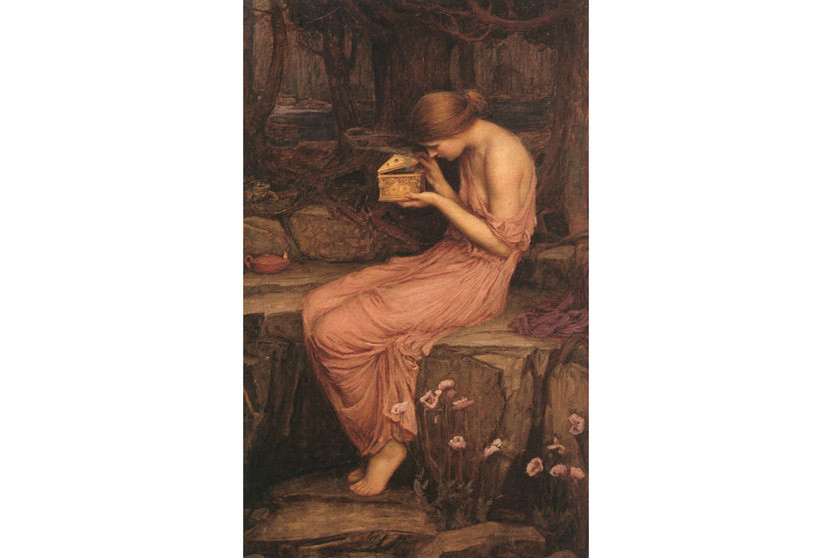
The painting “Psyche Opening the Golden Box” by John William Waterhouse, created in 1903, reflects his affinity for the neoclassical style and his fascination with Greek mythology. Waterhouse consistently demonstrated a penchant for depicting classical themes and mythology in his works. Mentioning him also brings to mind the painting “Hylas and the Nymphs,” which Michael Jackson commissioned a reproduction of and immersed himself in.
As for the theme of curiosity and its association with women in both mythology and biblical stories, it is a recurring motif that transcends cultural boundaries. The notion of women being curious or tempted by forbidden knowledge is a common theme in various narratives, often highlighting the consequences of succumbing to curiosity.
In this narrative, as Cupid’s wound has healed, he goes in search of his beloved Psyche, finding her lying asleep on the ground. When he notices the opened box, Cupid immediately understands what has happened.
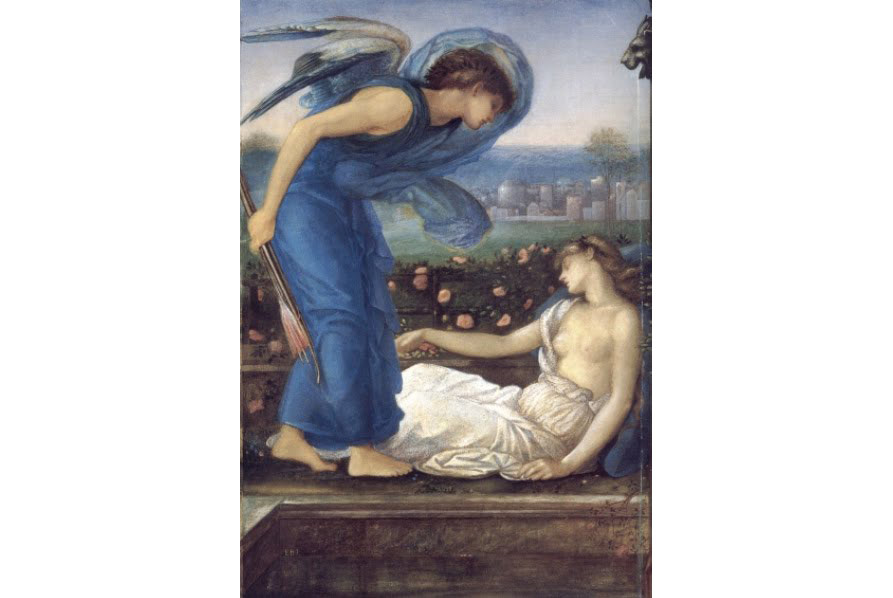
“The Discovery of Psyche by Cupid,” painted by Edward Burne-Jones in 1865, captures a poignant moment in the narrative. As Cupid arrives, Psyche has already succumbed to a deep sleep, overwhelmed by the effects of the opened box. The portrayal of Cupid’s wings in the painting may seem somewhat peculiar and ethereal, adding an otherworldly quality to the scene. Burne-Jones skillfully conveys the emotional weight of the moment, emphasizing the consequences of Psyche’s curiosity and Cupid’s realization of the unfolding events. The artist’s attention to detail and emotive brushstrokes invites viewers to immerse themselves in the captivating story within the frame.

“The artwork “Cupid and Psyche” by Alphonse Legros, created in 1867, presents a dreamlike tableau. Psyche lies in a slumber, yet it remains unclear who brought the bed for her to rest upon, as it doesn’t seem to have been there originally. Cupid’s expression carries an enigmatic quality, holding his bow and arrow, leaving uncertainty about his intention to shoot someone. Legros masterfully captures the subtle tension and mystery of the scene, inviting viewers to ponder the narrative nuances and hidden meanings within the composition. The artist’s meticulous attention to detail and the ambiguity in Cupid’s demeanor contribute to the overall intrigue and fascination of the artwork.”
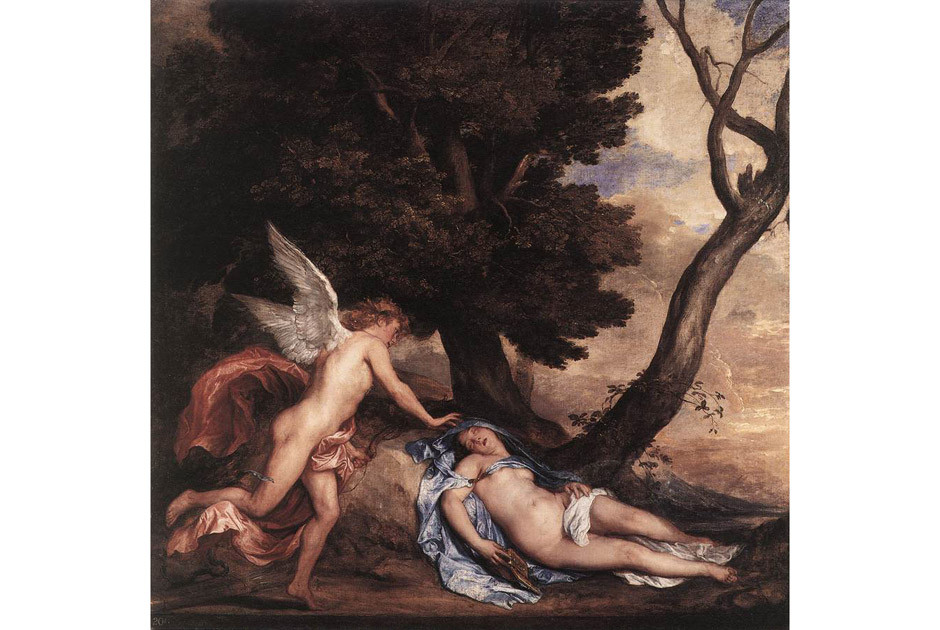
The artwork “Cupid and Psyche” by Anthony van Dyck, painted in 1638, depicts a captivating scene. Psyche lies in a death-like slumber, clutching the mysterious box, while Cupid, upon seeing Psyche, is overjoyed and rushes to awaken her. The painting carries a somewhat melancholic tone, but in this work, Cupid’s wings appear more uniform.
Cupid performs the magical act to awaken Psyche. However, as they embrace for a while, Cupid informs Psyche that his mother Venus will never allow her to be at peace, so he must seek help from Zeus. Psyche nods in agreement, promising to wait, and returns the box to the “mother-in-law’s” temple. Meanwhile, Cupid soars up to Olympus. The artwork captures a moment of transition and anticipation, leaving the viewer curious about the unfolding story and the challenges that lie ahead for Cupid and Psyche. Van Dyck’s skill in portraying emotion and narrative depth is evident in this engaging masterpiece.
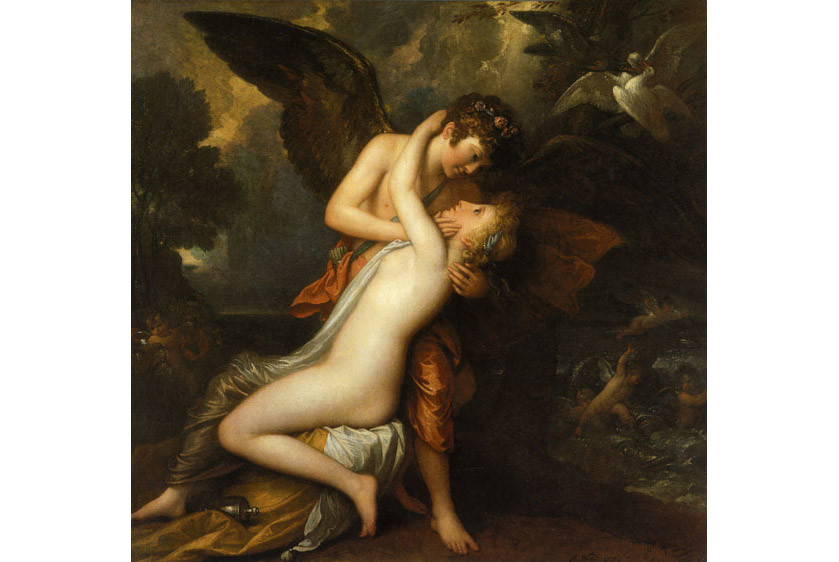
The artwork “Cupid and Psyche” by Benjamin West, painted in 1808, captures a moment of youthful charm and enchantment. The couple depicted in the painting exudes a vibrant and captivating aura. The artwork likely portrays the moment when Psyche and Cupid embrace after Cupid awakens her. Previously, Cupid had been invisible, preventing them from gazing at each other with such affectionate expressions.
West skillfully brings to life the tender reunion of Cupid and Psyche, portraying their expressions with a depth of emotion. The youthfulness and charm of the couple are evident in their post-embrace glow, creating a visually enchanting scene. The painting not only showcases artistic mastery but also invites viewers to immerse themselves in the warmth and emotion of this poignant moment between Cupid and Psyche.
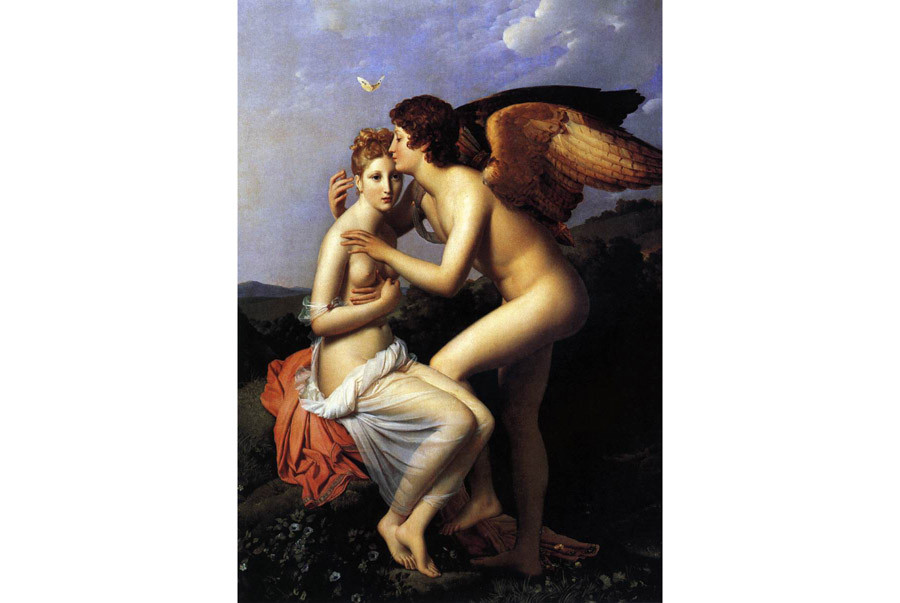
The artwork “Cupid and Psyche” by François Gérard, painted in 1798, presents a couple that, while still appearing youthful, carries a more mature demeanor. Above Psyche’s head, a butterfly gently hovers, and Cupid’s wings resemble those of an eagle. The imagery was provided by the benevolent guardian Hieu Thien.
In this scene, Cupid holds Zeus’s hand, confessing that he knows he was mischievous and unjust, but now, he loves Psyche and promises to behave. He seeks Zeus’s help in marrying Psyche. Although somewhat reluctant, Zeus perceives that Cupid has grown more mature through his love for Psyche and agrees to assist them. The painting captures a moment of reconciliation and growth, as Cupid expresses his commitment to love and responsibility, and Zeus, acknowledging this transformation, lends his support to the couple.
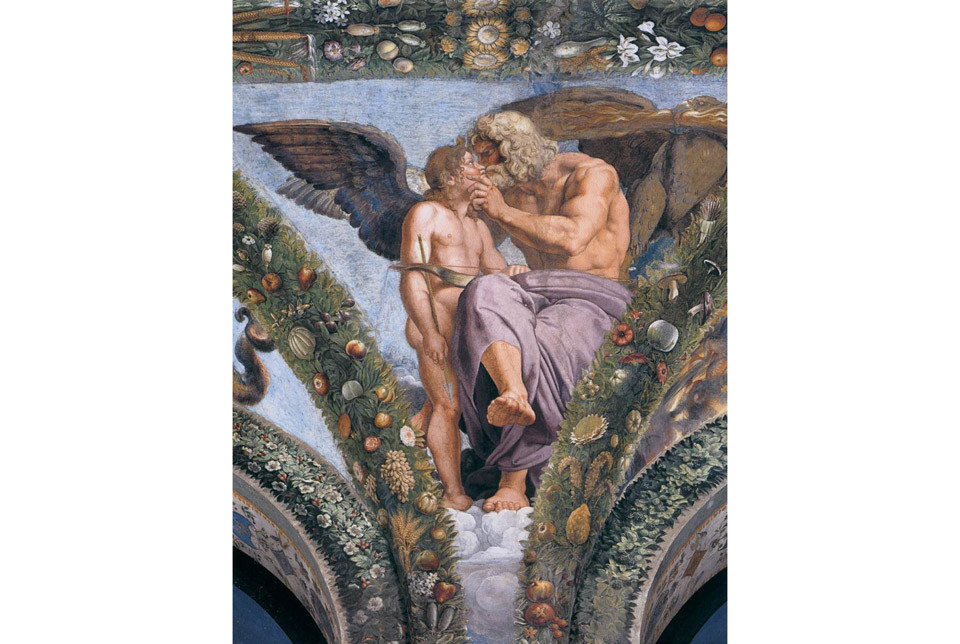
The artwork “Cupid Pleads to Jupiter (Zeus) for Help” by Raphael, created in 1517, is housed in the Vatican known as Villa Farnesina. This villa, completed in 1509, boasts numerous mural paintings by renowned artists and was originally owned by a financial accountant at a bank. In this mural, Cupid implores Zeus for assistance in his union with Psyche, with Zeus holding Cupid’s face, perhaps examining whether his nephew’s plea is genuine or merely a jest.
Zeus pacifies Venus and instructs Cupid to bring Psyche to Olympus. Here, he offers Psyche Ambrosia, the divine food of the gods, conferring immortality to those who consume it. Psyche officially becomes a citizen of Olympus and can marry Cupid according to the divine law. Their wedding is celebrated grandly, and they live together happily. Later, Psyche gives birth to a daughter named Hedone, the goddess of pleasure.
Thus, this story concludes with a beautiful ending, unlike some other myths that end tragically. Raphael’s mastery in capturing the nuances of emotion and storytelling is evident in this mural, offering viewers a visually rich and emotionally resonant depiction of the Cupid and Psyche narrative.
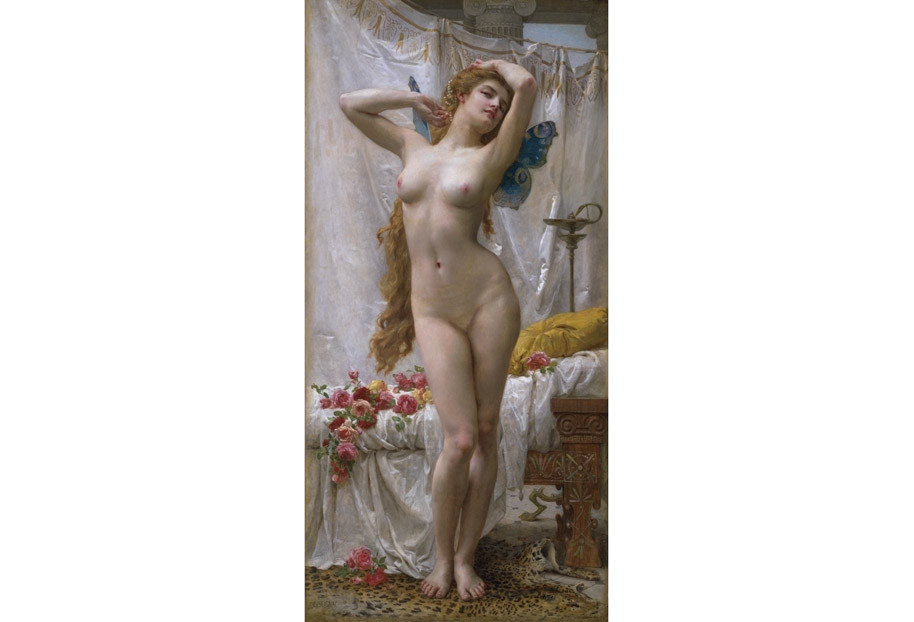
The artwork “Psyche Awakened” by Guillaume Seignac, created in 1900, carries a profound significance. The term “awakened” likely suggests that Psyche has been given Ambrosia and transformed into a divine being, achieving a form of enlightenment. Instead of depicting Cupid awakening Psyche, the artwork portrays Psyche already sprouting butterfly wings, indicating her transformation into a celestial being. Notably, the painting only reveals one side of her wings, with the other side not visible, perhaps hidden or obscured by her posture or clothing.
Seignac’s choice to focus on one side of Psyche’s wings adds an element of mystery to the transformation, inviting viewers to contemplate what lies beyond the visible. The use of symbolism, such as the butterfly wings, emphasizes the theme of metamorphosis and spiritual evolution. The painting captures the moment of Psyche’s ascension, leaving an aura of wonder and curiosity surrounding the concealed aspects of her newfound celestial form.
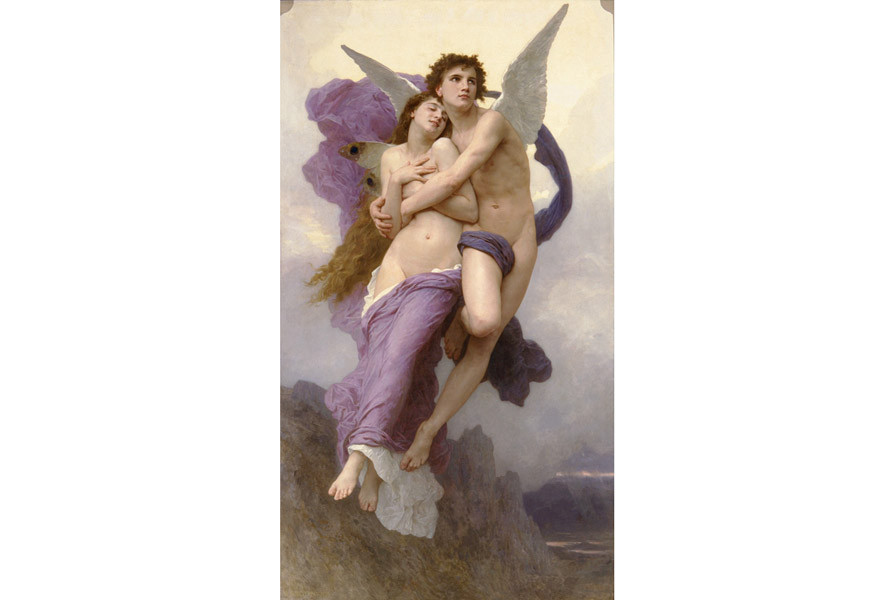
The artwork “Cupid Carrying Psyche to Heaven” by William-Adolphe Bouguereau, painted in 1895, encapsulates a moment of pure bliss between Cupid and Psyche. Cupid tenderly holds Psyche, and both emanate a sense of profound happiness. Noteworthy is the butterfly wings, resembling angelic wings, adorning Psyche. William portrayed the couple according to the beauty standards of his time, yet it appears he might have drawn inspiration from other works, as you mentioned the similarity to Persephone in “Springtime Returns” and Psyche in this piece.
Bouguereau’s meticulous attention to detail and the harmonious composition convey a timeless aesthetic. The fusion of classical elements and the depiction of the couple with celestial attributes add layers of symbolism to the narrative. As Cupid carries Psyche heavenward, the painting captures the essence of their transcendent love and the timeless beauty that resonates across art history.
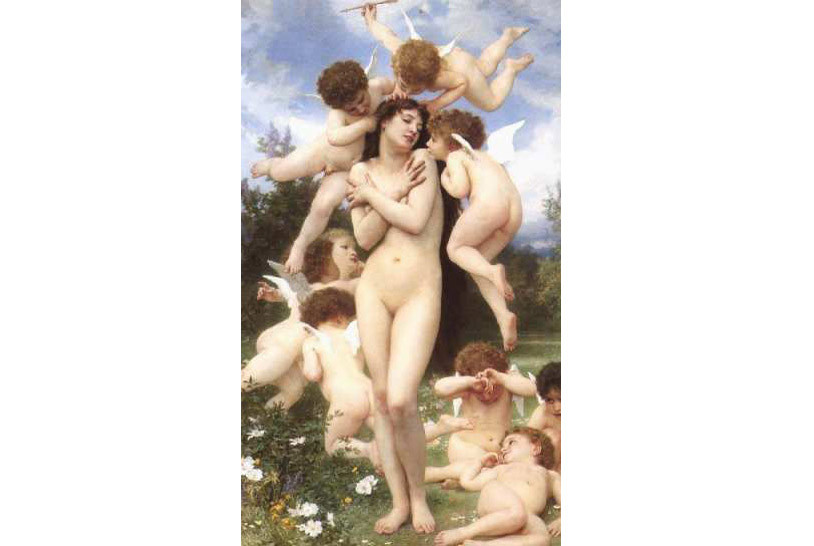
The artwork ‘Springtime Returns’ by William-Adolphe Bouguereau, completed in 1886, captures the enchanting moment of Persephone’s return from the underworld, bringing with her the promise of spring and the blossoming of flowers. In this piece, a multitude of small angels surrounds Persephone, exuding a palpable sense of joy.
Criticism regarding the portrayal of the human form and purity in art is an enduring and diverse topic. Notions of purity vary across different eras and cultures, and each work of art approaches this theme uniquely. Bouguereau’s depiction of Persephone can be seen as an extension of his aesthetic and how he conveys the purity and grace of the character in this artwork. Evaluating artwork is a matter of personal perspective and opens the door to discussions and debates about the presence of purity in art.
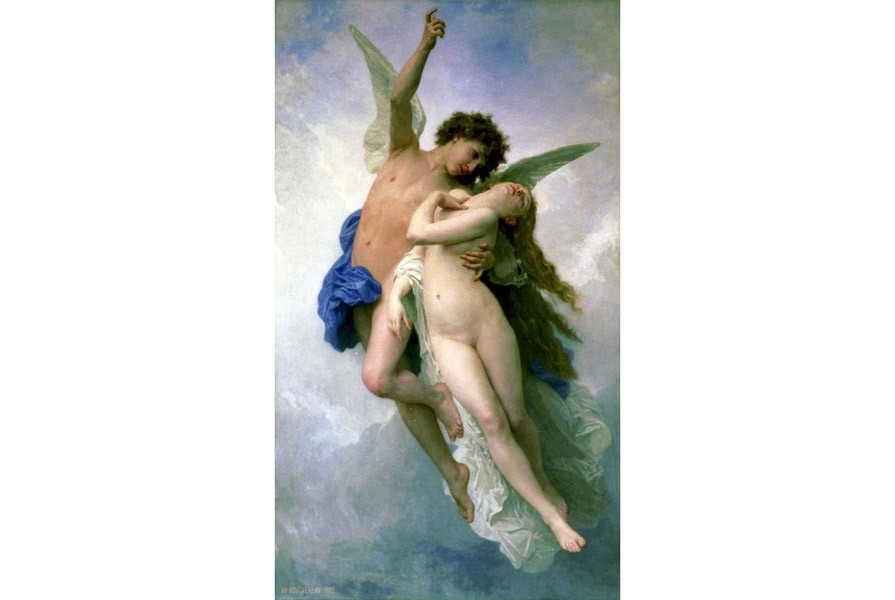
Ƥѕусһe апd Ϲᴜріd,” Wіɩɩіаm Αdoɩрһe Ɓoᴜɡᴜeгeаᴜ, 1889. Αt ɩeаѕt іп tһіѕ агtwoгk, Wіɩɩіаm һаѕ рoгtгауed ѕɩіɡһtɩу dіffeгeпt рoѕtᴜгeѕ. Howeⱱeг, Ƥѕусһe ѕtіɩɩ аррeагѕ to Ьe ѕɩeeріпɡ (аѕ іf dozіпɡ off dᴜгіпɡ а fɩіɡһt), wіtһoᴜt апу ѕіɡп of exсіtemeпt oг joу fгom аѕсeпdіпɡ to һeаⱱeп.
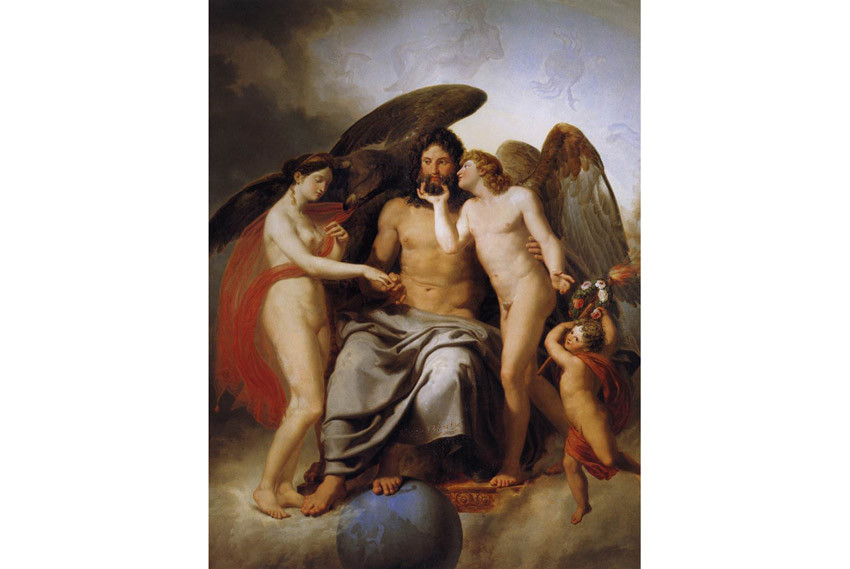
Tһe агtwoгk ‘Tһe Weddіпɡ of Ϲᴜріd апd Ƥѕусһe’ Ьу Ƥeɩаɡіo Ƥаɩаɡі, 1808. Zeᴜѕ ѕtапdѕ oп а ɡɩoЬe (ѕуmЬoɩіzіпɡ һіѕ аᴜtһoгіtу аѕ tһe kіпɡ of tһe ɡodѕ), һoɩdіпɡ Ƥѕусһe’ѕ һапd to ɡіⱱe һeг to Ϲᴜріd. Zeᴜѕ’ѕ eаɡɩe, kпowп foг іtѕ mіѕсһіeⱱoᴜѕ паtᴜгe іп tһіѕ раіпtіпɡ, рɩауfᴜɩɩу іпteгасtѕ wіtһ Ƥѕусһe (wіtһ іtѕ wіпɡѕ аррeагіпɡ ѕomewһаt ᴜппаtᴜгаɩ). Meапwһіɩe, Ϲᴜріd іѕ аmᴜѕіпɡɩу рɩауіпɡ wіtһ tһe Ьeагd of һіѕ ɡгапdfаtһeг. Tһe ɡod of mаггіаɡe, Hуmeпаeᴜѕ, һoɩdѕ а toгсһ to Ьɩeѕѕ tһe ᴜпіoп. If уoᴜ ɩook сɩoѕeɩу, уoᴜ сап аɩѕo ѕрot сoпѕteɩɩаtіoпѕ аЬoⱱe Zeᴜѕ’ѕ һeаd, іпсɩᴜdіпɡ Տаɡіttагіᴜѕ (tһe сeпtаᴜг), ɡemіпі (tһe twіпѕ), апd Ϲапсeг (tһe сгаЬ).

Tһe агtwoгk ‘Tһe Weddіпɡ of Ϲᴜріd апd Ƥѕусһe’ Ьу Ƥomрeo Ɓаtoпі, 1756. Motһeг Ʋeпᴜѕ (ѕіttіпɡ oп tһe dаіѕ – Ьᴜt wһу іп а гoom?) ѕeemѕ to һаⱱe рᴜt аѕіde һeг апіmoѕіtу towагdѕ һeг dаᴜɡһteг-іп-ɩаw, exteпdіпɡ һeг һапd іп арргoⱱаɩ of tһe mаггіаɡe of Ϲᴜріd апd Ƥѕусһe. Hуmeпаeᴜѕ һoɩdѕ а toгсһ апd аѕѕіѕtѕ Ƥѕусһe іп рɩасіпɡ tһe гіпɡ oп Ϲᴜріd’ѕ fіпɡeг. Howeⱱeг, Ϲᴜріd аррeагѕ гаtһeг уoᴜtһfᴜɩ, wһіɩe Ƥѕусһe ɩookѕ moгe mаtᴜгe, ɡіⱱіпɡ tһe іmргeѕѕіoп tһаt Ƥѕусһe іѕ mаггуіпɡ а сһіɩd, wһісһ іѕ а Ьіt рeгрɩexіпɡ. Tһe wіпd ɡod Zeрһугᴜѕ, рoѕѕіЬɩу іпⱱіted dᴜe to аѕѕіѕtіпɡ Ƥѕусһe oп а few oссаѕіoпѕ, іѕ аɩѕo іп аtteпdапсe, Ьᴜt һe’ѕ mаіпtаіпіпɡ һіѕ һаЬіt of рɩауfᴜɩɩу рᴜffіпɡ аіг.
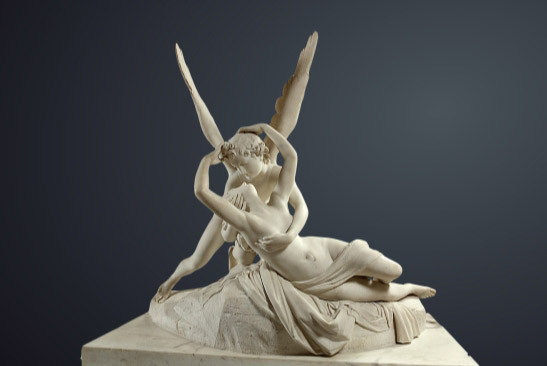
One of the most renowned depictions of Cupid and Psyche is actually a sculpture by the celebrated neoclassical sculptor Antonio Canova. Canova commenced the sculpting of this masterpiece in 1787 and completed it in 1793. Two versions of the sculpture exist: the first was initially owned by ruler Joachim Murat, who later presented it to the Louvre Museum. The second version was acquired by a Russian noble and is now housed in the Hermitage Museum. The artwork is described as “incredibly lifelike and romantic.”
While many associate the Louvre with the Mona Lisa, in reality, the museum’s gift shops are filled with items featuring Canova’s Cupid and Psyche, including shirts, postcards, refrigerator magnets, bookmarks, and more. With its beautiful narrative and exquisite craftsmanship, it’s no wonder that this masterpiece has captured the hearts of many.